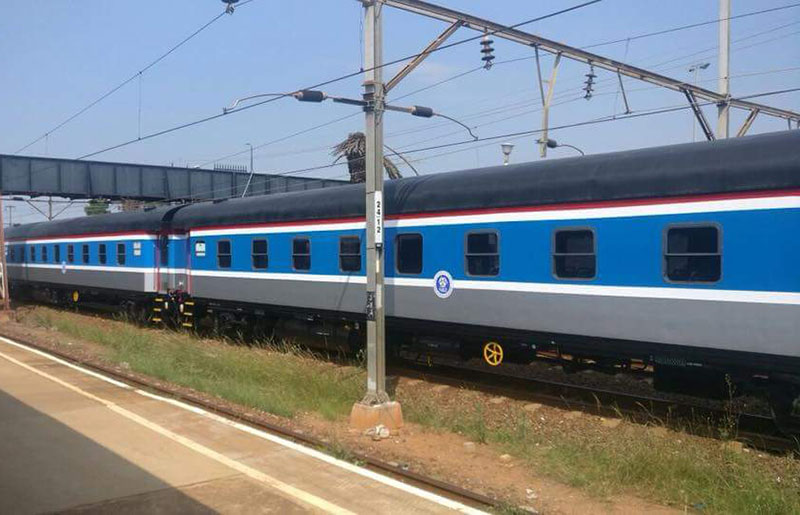Zim rail system worst in region. . . designed capacity down by 80pc
A chronic lack of investment in the State-owned National Railways of Zimbabwe (NRZ), has seen capacity of the country’s railway system falling by 80 percent in the past 20 years and now the worst in the region, according to a new State report.
Zimbabwe has a rail network of about 3 200 kilometres, with annual designed capacity of 18 million tonnes, but dilapidated infrastructure caused by theft, vandalism and lack of investment, has led to massive deterioration of the country’s rail service.
It strategically links the North-South corridors for southern Africa and cover a total of 3 200 kilometres, of which about 360km is currently managed under the Beitbridge-Bulawayo Railway concession, which is owned 85 percent by the Johannesburg Stock Exchange listed company Grindrod while the remainder is owned by NRZ.
Once the preferred mode of transport for most Zimbabweans and businesses, freight carriage at the State-run rail service has declined to an average three million from 18 million at peak in 1995, thus putting pressure on the country’s road network, which has since given in. The railways system has since become the missing link in as much economic turnaround efforts are concerned.
An efficient railway network connects major economic centres and provides low transport costs for bulk goods, thus making it a critical enabler in turnaround of the economy, according to Zimbabwe Infrastructure Report 2021 prepared by Finance and Economic Development Ministry.
“Government has so far done very well in improving macroeconomic environment and what is critical in its economic revival efforts is to have key enablers such as an efficient railways transport system in place,” economic analyst Gerald Musara told Business Weekly in an interview.
“We need to be competitive and low transport
costs will have a good share towards enhancing competitiveness.”
Businesspeople say they have been negatively affected by poor rail service over the years and this has seen them switching to expensive road transport.
“Unfortunately, NRZ has persistently failed to offer a good service,” Ray Mutokonyi, chairman of Coal Producers Association, a lobby group that represents coal miners told Business Weekly.
“Sometimes we have customers with rail sidings but in most cases, the NRZ delay to pick up the order because they may not have wagons. When they take the order, it takes forever to get to the customers. The service is quite pathetic,” Mutokonyi added.
The Government says it has a plan to recapitalise the NRZ through refurbishment and replacement of rolling stock, signalling equipment, ICT and track infrastructure.
It says it will develop a bankable rail infrastructure development plan, implementation of cost-based user fees aligned to market fundamentals in order to improve performance and allow for reinvestment in additional capacities.
It is also looking at rebuilding confidence through Service Level Agreements (SLA) with client as well as enhancing capacity building, including training of artisans and other key personnel in order to improve performance. In the 2021 National Budget, the Government targets to complement the parastatal’s own resources with $250 million (about US$3 million) being set aside for urgent maintenance services.
Last year, Government cancelled a deal struck with South African logistics group Transnet to recapitalise NRZ, blaming the consortium for not providing a viable funding plan.
Transet was expected to help turnaround the fortunes of NRZ by providing funding to acquire and refurbish wagons, upgrade the company’s information communication technology and signalling systems and increase NRZ’s capacity to move goods.
A joint venture between Transnet and Diaspora Infrastructure Development Group (DIDG), a consortium of Zimbabwean investors living abroad, had won the bid to recapitalise the financially struggling NRZ with US$400 million in August 2017.
The said it had secured over US$400 million for the recapitalisation of the National Railway of Zimbabwe, including an additional US$20 million to address start-up and working capital requirements of the Joint Venture Concession Company. DIDG had also received term sheets with funding in excess of US$900 million from the regional and international banks participating on the US$340 million a debt facility to be arranged by Afreximbank. Afreximbank had expressed to provide a loan amounting US$100 million, TDB Bank, US$75 million, Standard Bank, US$317 million while Nedbank and ABSA US$317 ABSA will chip in with US$200 million each.-herald.cl.zw











